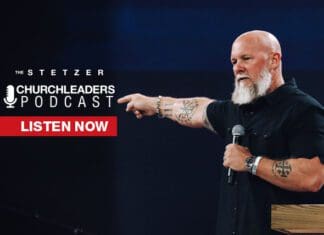Editor’s note: This article is part of forum discussing the fourth Lausanne Congress. It is not an official Lausanne Movement forum but an opportunity for Lausanne delegates to share their thoughts about the fourth Lausanne Congress, the Seoul Statement, and the future of the mission. You can read the entire series, from diverse voices around the world here.
As a young intercultural studies scholar from India who lives in the USA and serves in theological higher education, attending Lausanne Four (4) in Seoul-Incheon was an exciting experience.
In the last decade, as I moved my residence to three countries—India, England, and the USA, I see myself at the intersection of globalization, migration, and transnationalism, embodying the “in-between” space of urban India and the Indian diaspora community in America. At Lausanne 4, all my worlds seem to converge. Therefore, my reflections are from such a perspective of converging diversities.
Together in Christ, Yet Diverse
Within the broader umbrella of evangelization, the fourth Lausanne congress met in Seoul under the theme, “Let the Church Declare and Display Christ Together.” Lausanne 4 might have been the most diverse (ethnic, racial, and regional) global evangelical gathering, with over 5000 leaders from around 200 countries coming together to engage in various discourses on evangelization. The diverse lineup of Bible expositors, plenary speakers, and emcees brought an eclectic glimpse of the global evangelical space.
Most importantly, the regional and racial diversity around our discussion tables was probably more formative to all the delegates. However, a few instances during the week made me think of the complexity in our pursuit of togetherness amid global diversity. I list two of them as follows.
1. Togetherness of the Global South and North:
Due to my diasporic nature of “in-between” cultural existence, I attended both the North American and South Asian regional gatherings. My contrasting experiences in these gatherings were a clear example of the diversity present within the global evangelical community. On one end, the North American session, led by Ed Stetzer, seemed like an intellectual engagement with mini TED-talks where four speakers from North America expounded on various cultural realities that need to be addressed as we mobilize the North American church for the Mission. The session ended with a prayer and an appeal to join the Amplify conference in Wheaton.
On the other hand, the South Asian session, led by Chadwick Mohan, felt more like a communal affair in which all the country representatives were named and recognized with applause. There was a common acknowledgment of gratitude in the room, having overcome the visa-related challenge of attending the congress. Furthermore, time was spent in table discussion reflecting on the question, “What are the greatest hindrances of advancing the gospel in your locality?” The session concluded with a surprising yet deeply moving segment of reconciliation prayer between Indian and Pakistani delegates, considering the historic political tension between India and Pakistan.
Ironically, the South Asian region that is much affected by social ill found it essential to speak, act, and spiritually integrate prayers of reconciliation in their discourses of evangelization, while the North American region that remains in relative social stability chose to focus on a more intellectual manner of discourse and neglected such spiritual practices in their gathering.
To condense my experience in the anthropological verbiage, one opted for an “experience-near” engagement while the other opted for an “experience-distant” engagement. In the South Asian gathering, there was a communal sense of reckoning while we prayed for peace and reconciliation. While in the North American gathering, there was a sense of distance: intellectually stimulating but distant in heart. This is not to say that the North American delegation did not practice acts of social reconciliation or any such social engagements; instead, such practices did not take priority. Or perhaps we forgot to listen to the socially marginalized Christian brothers and sisters in North America?
Although they are my personal experiences, they are also the microcosmic display of diverse Christianity practiced in both these regions. In the global space of Lausanne 4, I am unsure if we created enough spaces to be impacted in our hearts by the global churches, especially from the churches in the Global South. The predominant Western musical arrangements of the worship set is one segment that warrants such critical reflection. In summation, at Lausanne 4, there was the togetherness of the Global North and South, but they point towards a much-needed mutual learning process to be effective in our growing globalized and transnational world.
2. Togetherness of Social Action and Evangelism in Integral Mission
The State of the Great Commission Report, the various plenary talks, and the 25 Gaps discussions during the congress reflect Lausanne’s heart to engage in the diverse nature of social evils from various world contexts as we bring the good news of the Gospel to all. They are in-line with the Lausanne Covenant. Therefore, it is apt to uphold the continuous need for “holistic/integral mission”—the togetherness of social action and evangelism. However, there is no Lausanne Congress without a bit of tension on integral mission!






















 In the whirlwind of daily life, it’s easy to overlook the profound impact that genuine, heartfelt interactions can have on our relationships. The act of delighting in someone’s presence—not for what they achieve but simply for who they are—can transform connections with friends and family, fostering a deeper sense of love, acceptance, and mutual joy. This article explores the art of delighting in others and offers practical tips for incorporating this powerful practice into your everyday life, enhancing your emotional connections.
In the whirlwind of daily life, it’s easy to overlook the profound impact that genuine, heartfelt interactions can have on our relationships. The act of delighting in someone’s presence—not for what they achieve but simply for who they are—can transform connections with friends and family, fostering a deeper sense of love, acceptance, and mutual joy. This article explores the art of delighting in others and offers practical tips for incorporating this powerful practice into your everyday life, enhancing your emotional connections.






